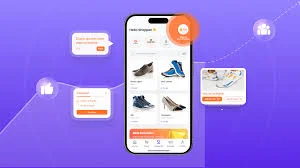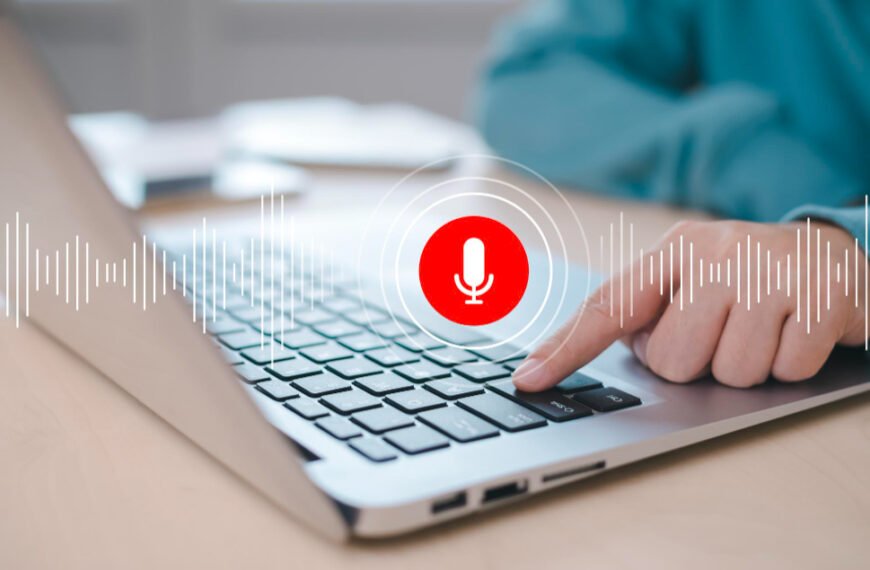In the fast-paced world of mobile technology, where attention spans are short and expectations are high, the challenge of designing apps that attract and retain users is greater than ever. This is where behavioral science steps in, particularly through “nudges.”
Originally introduced by Richard Thaler and Cass Sunstein in their seminal book Nudge, the idea revolves around subtly influencing decision-making without restricting choices. In mobile app design, this translates to designing features, prompts, and pathways that gently steer users toward desired actions—whether it’s completing their profile, making a purchase, or engaging more deeply with the product.
The power of nudges in apps lies in their ability to tap into human psychology in non-intrusive ways. These are not pop-ups that scream for attention or mandatory actions that frustrate users. Instead, they are strategically placed design elements that support user decisions while aligning with business goals. As more apps compete for the same user base, incorporating behavioral nudges has become a smart, ethical, and effective strategy to increase usability and conversion.
This blog explores how app designers and product teams can harness the power of nudges in apps to create more engaging, intuitive, and successful digital experiences.
The Psychology Behind Nudges
To understand how nudges function in app design, it’s essential to first look at the psychological principles that underpin them. Behavioral economics, a field at the intersection of psychology and economics, has shown that people do not always make rational decisions. Instead, context, emotion, and cognitive biases often influence our choices.
Key concepts include:
- Choice Architecture: The way options are presented affects users’ decisions. For example, highlighting a “Recommended Plan” among pricing tiers can guide users toward that choice without eliminating alternatives.
- Default Bias: Users are more likely to go with the default option. Setting opt-in features like notifications or location sharing as defaults can significantly increase adoption rates.
- Social Proof: Showing that others have taken action can motivate similar behavior. For example, displaying the number of users who have signed up today creates a sense of momentum.
- Loss Aversion: People are more motivated to avoid losses than to acquire gains. Timed discounts or limited-time offers can leverage this bias to drive conversions.
These insights form the foundation of nudge design. When implemented thoughtfully, they guide users through their journey in a natural and helpful way. The power of nudges in apps stems from their alignment with how users think and behave, making the digital experience smoother and more intuitive.
Why Nudges Work So Well in Mobile Apps
Mobile apps present a unique context for user interaction. Sessions are often brief, users are distracted, and competition for screen time is intense. This environment makes it especially important to design for clarity, simplicity, and action. Nudges are ideally suited to this context.
Several characteristics of mobile usage make nudges more effective:
- High Frequency, Low Duration: Users check apps frequently but often for short durations. Nudges help make the most of these micro-moments by guiding attention quickly and clearly.
- Context Sensitivity: Mobile apps can access real-time data like location, time, and user behavior. This allows nudges to be contextually relevant, increasing their effectiveness.
- Limited Screen Space: With smaller screens, every pixel counts. Nudges help prioritize what matters most, subtly directing users without overwhelming them.
- Intimacy of Mobile Devices: Phones are personal devices. Personalized nudges feel more like helpful suggestions than manipulations.
By integrating nudges seamlessly into the mobile experience, designers can reduce friction, improve decision-making, and enhance satisfaction. Whether it’s a prompt to enable a feature, a subtle reminder to complete an action, or a well-timed notification, the power of nudges in apps can dramatically improve user flow and outcomes.
Key Types of Nudges in Mobile App Design
Various nudges can be embedded into mobile apps, each serving a different purpose in the user journey. Let’s break down a few of the most impactful categories:
Onboarding Nudges: These are crucial during the first interactions with the app. Examples include:
- Progress Indicators: Let users know how far they are in the onboarding process.
- Tooltips and Hints: Briefly explain features as users encounter them.
- Checklists: Encourage completing key tasks (e.g., uploading a profile picture or enabling notifications).
Engagement Nudges: These maintain user interest and encourage ongoing use:
- Push Notifications: Timely messages that draw users back into the app.
- Gamification Elements: Points, badges, and streaks to reward engagement.
- Personalized Recommendations: Suggesting content or features based on past behavior.
Conversion Nudges: These are used to drive key business actions like purchases or signups:
- Scarcity Messages: “Only 2 left in stock!”
- Urgency Prompts: “Sale ends in 3 hours.”
- Smart CTAs: Changing call-to-action buttons based on user readiness.
Retention Nudges: These help keep users coming back:
- Streaks and Milestones: Celebrate continued engagement.
- Reminder Notifications: Nudges to return to incomplete tasks.
- Social Features: Encourage connections or challenges with friends.
When deployed thoughtfully, these nudging techniques create a layered, intuitive experience. They guide without forcing and suggest without shouting, maximizing both user satisfaction and business success.
Designing Nudges That Feel Natural (Not Manipulative)
The effectiveness of nudges hinges not just on their presence but on their tone, timing, and intent. Poorly designed nudges can feel like dark patterns, deceptive tactics that push users into actions they don’t want. To avoid this, designers must prioritize ethics and empathy.
Best Practices Include:
- Transparency: Make it clear that the user is making a choice. Don’t hide opt-outs or manipulate default settings unfairly.
- Relevance: Nudges should be based on actual user behavior or context. Irrelevant prompts create annoyance, not engagement.
- Control: Always allow users to dismiss or opt out of nudges. Consent builds trust.
- Alignment with User Goals: A good nudge helps users achieve their objective, not just the app’s. For example, a meditation app nudging users to maintain a streak supports their personal well-being goals.
Avoiding Dark Patterns
- Don’t use countdown timers when there’s no actual time limit.
- Don’t design opt-outs that are hard to find or understand.
- Don’t overload users with pop-ups disguised as nudges.
Ethical design is not just about doing what’s right; it also improves long-term business outcomes. Users who feel respected are likelier to engage, convert, and stay loyal. The power of nudges in apps is strongest when they serve as trusted guides, not manipulative traps.
The Measurable Impact of Nudging in Apps
The value of incorporating nudges into mobile app design is not just theoretical—it’s highly measurable. Leading app-based businesses routinely conduct A/B tests and behavior analytics to validate the performance of nudging strategies.
Metrics That Improve with Nudges:
- Activation Rates: Users complete more steps during onboarding when nudged with progress bars and helpful tips.
- Feature Adoption: Subtle nudges help surface underused features, improving overall product utilization.
- Conversion Rates: Nudges using urgency, scarcity, or social proof consistently outperform static messages.
- Retention: Habit-forming nudges like streaks, challenges, or reminders boost return rates.
Beyond quantitative metrics, nudges enhance qualitative aspects like user satisfaction and perceived ease of use. With proper design and testing, the power of nudges in apps becomes a competitive advantage that impacts both the user experience and the business bottom line.
Getting Started: Integrating Nudges into Your App Workflow
Ready to start using nudges in your app? It begins with thoughtful planning and cross-functional collaboration.
Steps to Take:
- Map the User Journey: Identify where users drop off, hesitate, or need encouragement.
- Pinpoint Decision Moments: These are prime opportunities for nudging, like choosing a plan, filling out a form, or completing a task.
- Design Contextual Nudges: Create relevant and helpful prompts at those key points.
- Use Behavioral Data: Leverage user behavior, preferences, and engagement history to personalize nudges.
- Test and Iterate: Implement A/B testing to compare variations and refine effectiveness.
Tools to Help:
- Behavioral analytics platforms (e.g., Mixpanel, Amplitude)
- In-app messaging tools (e.g., OneSignal, Braze)
- AI-based personalization engines
Team Involvement:
- Product Designers: To create UX that embeds nudges seamlessly.
- Product Managers: To align nudging with business KPIs.
- Marketing Teams: To ensure messaging fits the brand tone.
- Data Analysts: To measure impact and guide optimization.
Building nudges into the app lifecycle is not a one-time task—it’s a continuous process of learning and refining. But once mastered, the power of nudges in apps becomes an enduring advantage.
Conclusion
Subtle behavioral nudges offer a clear edge in a landscape crowded with apps vying for user attention. By leveraging cognitive science and aligning design with user psychology, mobile apps can become more engaging, efficient, and effective.
From onboarding and engagement to conversion and retention, nudges in apps drive meaningful results across the user journey. But the key lies in designing them ethically, testing them rigorously, and personalizing them intelligently.
If you’re ready to explore how nudging can elevate your mobile strategy, book a demo today and see how Nudge can help you build smarter, more intuitive user experiences.














